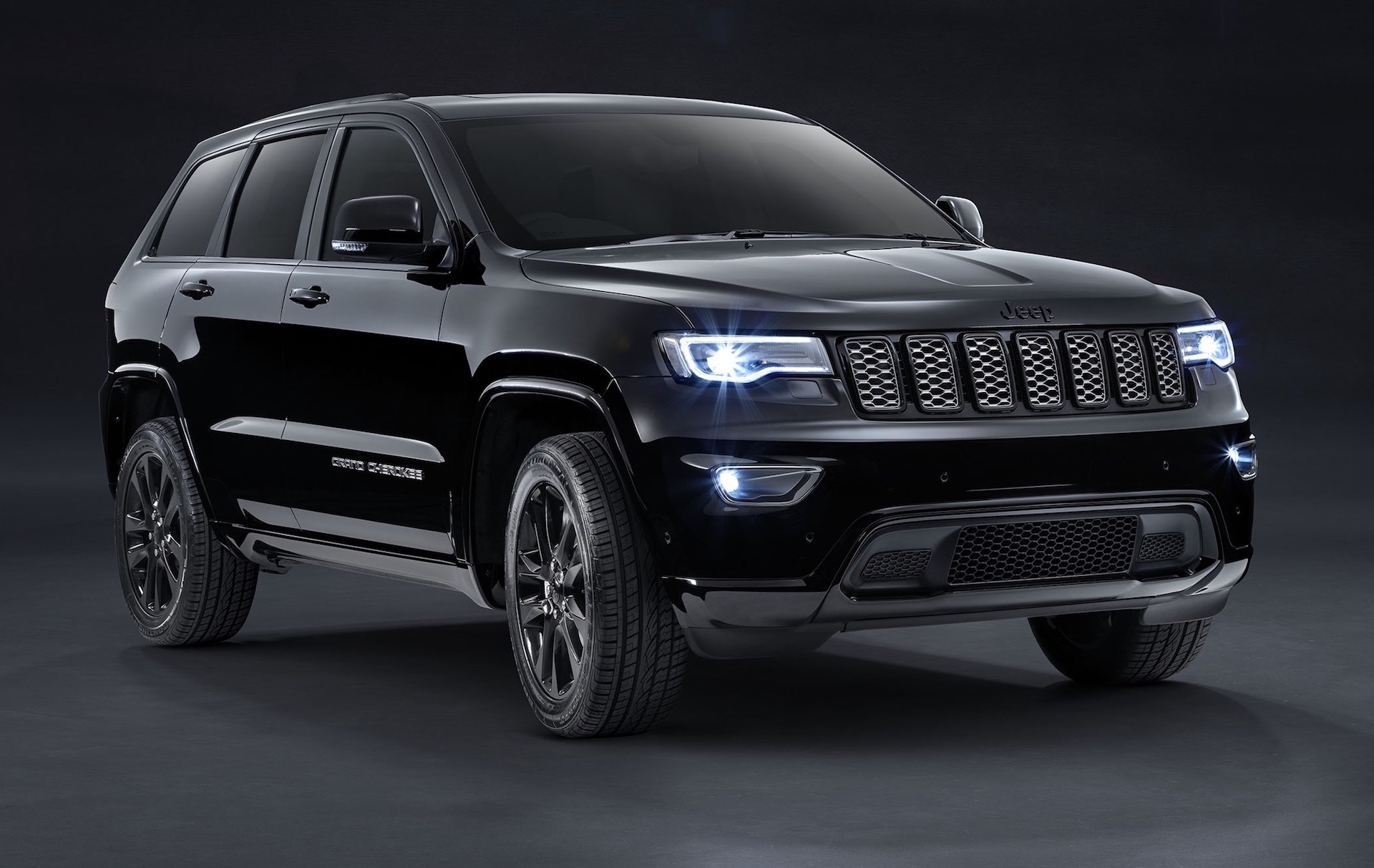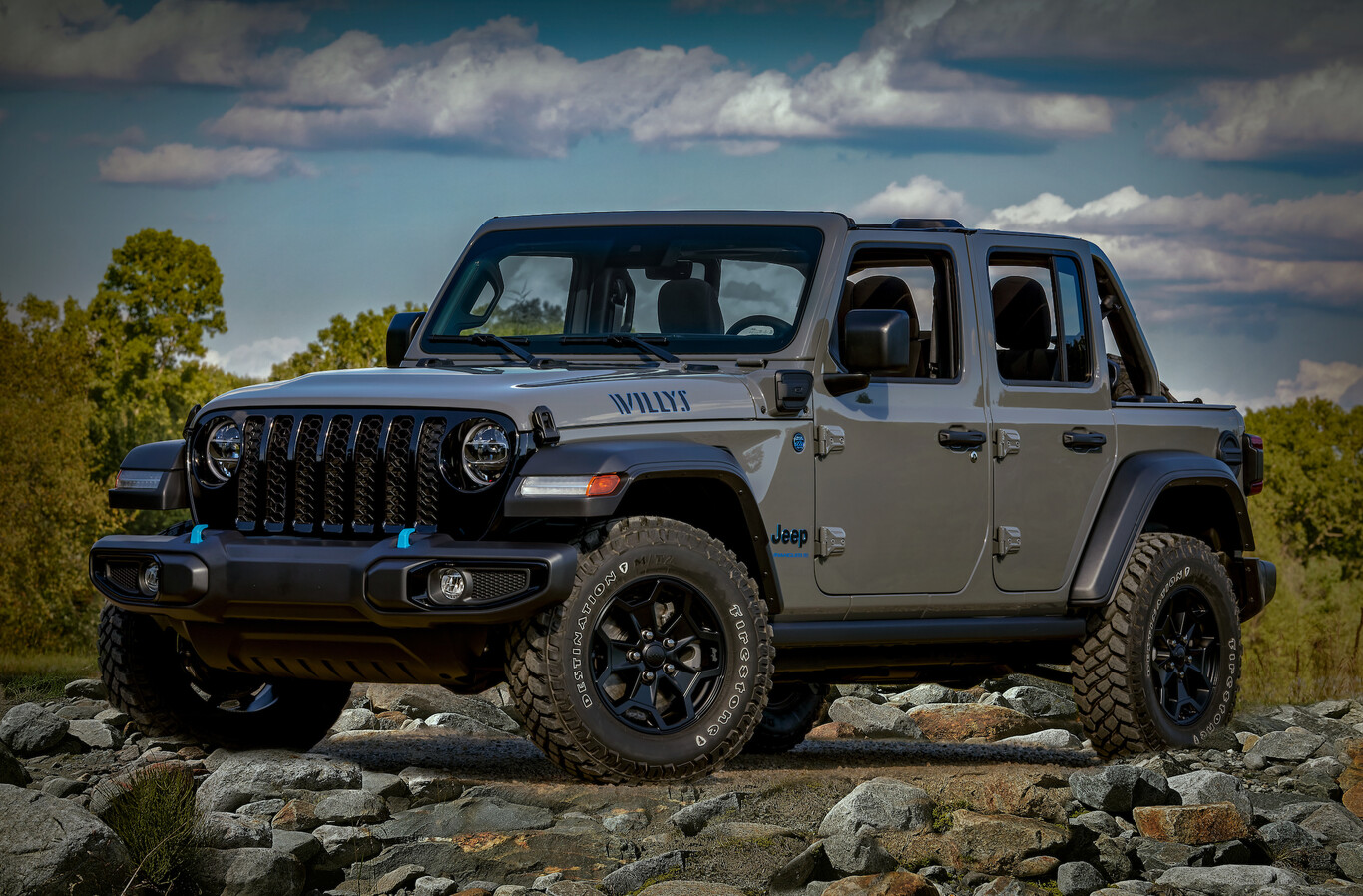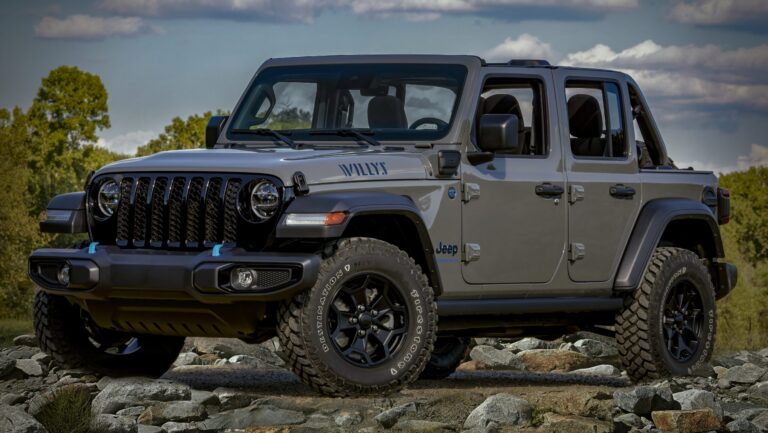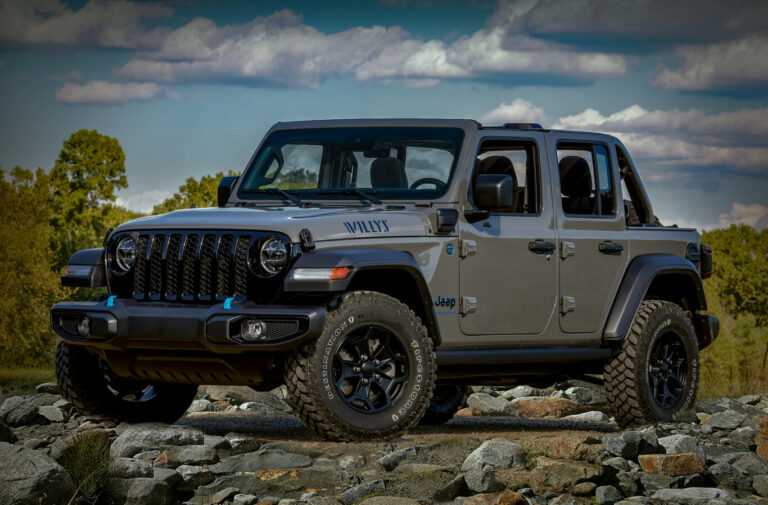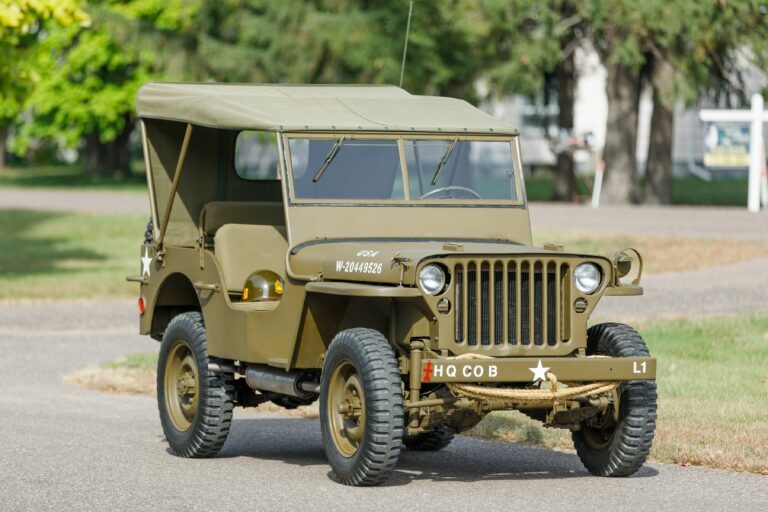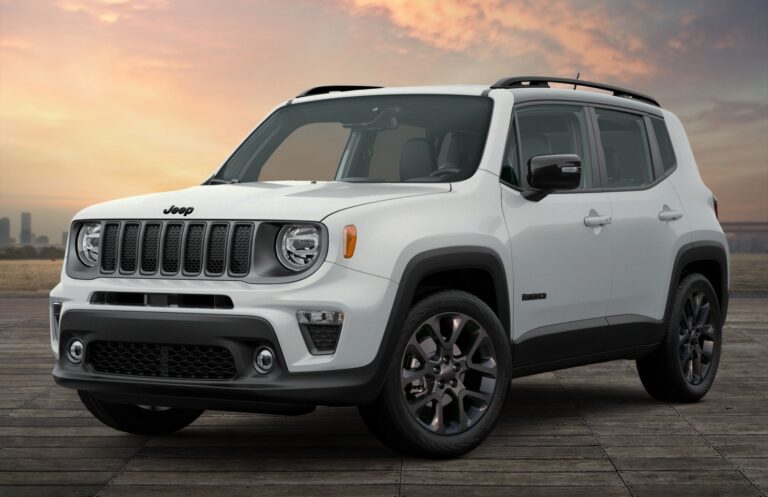Jeep Commander Wheels For Sale: A Comprehensive Guide to Upgrading and Replacing Your Ride’s Foundation
Jeep Commander Wheels For Sale: A Comprehensive Guide to Upgrading and Replacing Your Ride’s Foundation jeeps.truckstrend.com
The Jeep Commander, with its distinctive styling, robust capabilities, and seven-passenger seating, carved out a unique niche in the SUV market. Owners cherish their Commanders for their blend of rugged utility and family-friendly comfort. At the heart of its stance, performance, and aesthetic appeal are its wheels. Whether you’re looking to replace damaged rims, upgrade for enhanced off-road prowess, improve street performance, or simply refresh your vehicle’s look, understanding the ins and outs of "Jeep Commander Wheels For Sale" is paramount. This comprehensive guide will equip you with the knowledge needed to make an informed decision, ensuring your Commander not only looks its best but also performs optimally.
Understanding Your Jeep Commander’s Wheel Needs
Jeep Commander Wheels For Sale: A Comprehensive Guide to Upgrading and Replacing Your Ride’s Foundation
Before diving into the vast market of wheels, it’s crucial to understand the foundational specifications for your Jeep Commander. Getting these right is not just about aesthetics; it’s about safety, performance, and avoiding costly fitment issues.
- Bolt Pattern: The Jeep Commander (XK/XH generation, 2006-2010) consistently uses a 5×5 inch (or 5x127mm) bolt pattern. This means there are five lug holes, spaced on a 5-inch diameter circle. Any wheel you consider must match this pattern precisely.
- Diameter: Stock Commander wheels typically range from 17 to 20 inches. While you can sometimes go slightly larger or smaller, sticking close to these sizes minimizes complications with tire fitment, fender clearance, and speedometer calibration.
- Width: OEM wheel widths usually fall between 7.5 to 8 inches. The wheel width directly impacts the tire size you can mount and how the tire’s sidewall behaves.
- Offset and Backspacing: These are critical for proper fitment.
- Offset refers to the distance from the wheel’s mounting surface to the centerline of the wheel. A positive offset means the mounting surface is towards the front of the wheel (closer to the vehicle’s exterior), while a negative offset means it’s towards the rear (closer to the vehicle’s suspension). Commander wheels typically have a positive offset (e.g., +30mm to +50mm).
- Backspacing is the distance from the mounting surface to the rear edge of the wheel. It’s closely related to offset and dictates how far the wheel sits inward. Incorrect backspacing can lead to rubbing issues with suspension components or fender wells.
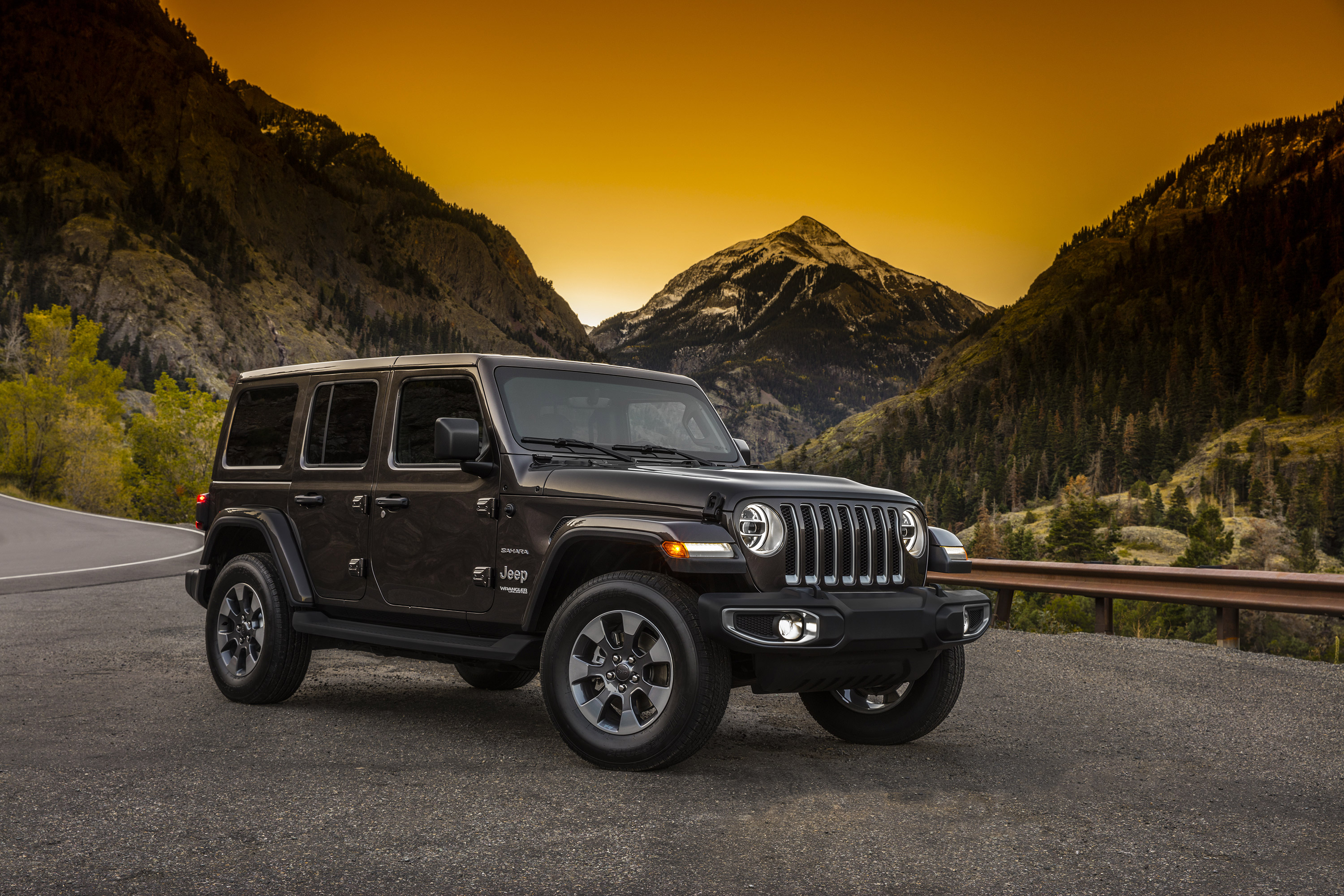
- Center Bore: This is the hole in the center of the wheel that fits over the vehicle’s hub. The Commander has a specific hub diameter that the wheel’s center bore must match or be larger than. If it’s larger, hub-centric rings are required to ensure the wheel is properly centered and reduce vibrations.
Understanding these specifications for your specific Commander model year is the first step to a successful wheel purchase. Consult your owner’s manual or a reputable wheel fitment guide online.

Types of Jeep Commander Wheels Available
The market for Jeep Commander wheels is diverse, offering options for every budget and preference.
- OEM (Original Equipment Manufacturer) Wheels: These are the wheels that came standard on your Commander from the factory.
- Pros: Guaranteed fitment, maintaining original look, often available as "take-offs" from new vehicles.
- Cons: Can be expensive when new, limited style options, may be harder to find in perfect condition if used.
- Where to Find: Dealerships, online parts retailers, private sellers, salvage yards.

- Aftermarket Wheels: These are manufactured by third-party companies and offer the widest range of styles, finishes, and constructions.
- Alloy Wheels: The most common type, made from aluminum alloys. They are lighter than steel, improve heat dissipation, and allow for intricate designs. Most aftermarket wheels fall into this category.
- Cast Alloy: Most affordable, made by pouring molten metal into a mold.
- Flow Formed/Rotary Forged: Lighter and stronger than cast, made by stretching a cast barrel.
- Forged: Strongest and lightest, made from a solid block of metal under immense pressure, but also the most expensive.
- Steel Wheels: Heavier and less aesthetically diverse than alloy, but incredibly durable and affordable. Often preferred for extreme off-roading due to their ability to be hammered back into shape. Commonly used for winter tires.
- Pros: Unlimited styling options, performance improvements (lighter weight, stronger construction), wider range of sizes/offsets.
- Cons: Fitment research is crucial, quality varies significantly between brands, can be very expensive for high-performance options.
- Alloy Wheels: The most common type, made from aluminum alloys. They are lighter than steel, improve heat dissipation, and allow for intricate designs. Most aftermarket wheels fall into this category.
- Replica Wheels: Designed to mimic the appearance of popular OEM or high-end aftermarket wheels at a lower price point.
- Pros: Affordable way to achieve a desired look.
- Cons: Quality and durability can be inconsistent, may not meet the same engineering standards as genuine wheels.
- Winter/Snow Wheels: Often steel or less expensive alloy wheels, typically in a smaller diameter, paired with dedicated winter tires.
- Pros: Protect your primary wheels from salt and harsh conditions, improve winter driving safety.
- Cons: Additional storage required, aesthetic compromise.
Where to Find Jeep Commander Wheels For Sale
The availability of wheels for your Commander is extensive, both online and in brick-and-mortar stores.
- Online Retailers:
- Dedicated Wheel & Tire Shops: Websites like Tire Rack, Custom Offsets, Summit Racing, and Discount Tire Direct offer vast inventories, fitment tools, and often package deals with tires.
- E-commerce Giants: Amazon and eBay host numerous sellers offering new and used wheels. Be diligent with seller ratings and product descriptions.
- Specialty Jeep/Off-Road Stores: Companies like ExtremeTerrain, Quadratec, or Northridge4x4 often carry wheels specifically designed for Jeep platforms, including the Commander.
- Local Tire Shops & Auto Parts Stores: Places like Pep Boys, America’s Tire, or independent tire shops can order wheels, offer installation services, and provide expert advice.
- Junkyards/Salvage Yards: A great source for used OEM wheels, often at a fraction of the new cost. Inspect thoroughly for damage.
- Private Sellers: Craigslist, Facebook Marketplace, and dedicated automotive forums are excellent places to find used wheels from other Commander owners. You can often find great deals, but "buyer beware" applies here more than anywhere else.
- Dealerships: Your local Jeep dealership can order new OEM wheels, though this is usually the most expensive option. They might also have "take-off" sets available from new vehicle upgrades.
Key Considerations When Buying Wheels
Making the right purchase requires careful thought beyond just aesthetics.
- Fitment, Fitment, Fitment! We cannot stress this enough. Verify the bolt pattern (5x127mm), diameter, width, offset, and center bore. Use online fitment guides or consult with a professional. Incorrect fitment can lead to rubbing, premature bearing wear, and dangerous handling characteristics.
- Material:
- Alloy: Lighter, better heat dissipation, wide range of styles. More susceptible to bending or cracking from severe impacts.
- Steel: Heavier, very durable, more resistant to bending, but less aesthetically pleasing. Great for off-road or winter use.
- Condition (for Used Wheels):
- Cracks: Absolutely avoid wheels with cracks, especially around the lug holes or spokes. These are dangerous.
- Bends/Dents: Small cosmetic bends might be fixable, but significant bends, especially in the barrel, can cause vibrations and tire issues.
- Curb Rash: Cosmetic scrapes on the lip of the wheel from hitting curbs. Minor rash is common and often repairable, but severe rash might indicate deeper structural issues.
- Corrosion: Especially on older or painted wheels, corrosion can compromise structural integrity or finish quality.
- Budget: New aftermarket alloy wheels can range from a few hundred dollars per wheel to over a thousand for high-end forged options. Used OEM or steel wheels will be significantly cheaper. Factor in potential installation costs, new lug nuts, and TPMS sensors.
- Style and Finish: This is personal preference. Common finishes include chrome, black (gloss, matte, satin), machined, polished, and various painted colors. Consider how the finish will hold up to your local climate and driving conditions.
- Tire Compatibility: Ensure the new wheels are compatible with your current tires, or budget for a new set of tires if the wheel size or width changes significantly.
- TPMS (Tire Pressure Monitoring System): Your Commander uses TPMS sensors. If your new wheels don’t come with them, you’ll need to transfer your existing ones (if compatible) or purchase new ones. This often requires professional installation and programming.
The Buying Process: A Step-by-Step Guide
- Define Your Needs & Budget: Are you replacing damaged wheels, upgrading for looks, or seeking performance? How much are you willing to spend per wheel?
- Research Specifications: Double-check your Commander’s exact wheel specifications (bolt pattern, offset range, etc.).
- Browse Options: Look online and locally. Compare prices, read reviews, and examine photos carefully.
- Ask Questions: If buying from a private seller or small shop, don’t hesitate to ask about the wheel’s history, any repairs, or specific measurements.
- Inspect Thoroughly (for used wheels): If possible, inspect wheels in person. Look for damage, check the mounting surface, and ensure all lug holes are intact.
- Verify Return Policies: Especially when buying online, understand the seller’s return policy in case of fitment issues or hidden damage.
- Consider Professional Installation: Unless you have experience, it’s often best to have new wheels and tires mounted and balanced by a professional. They can also handle TPMS setup.
Benefits of Upgrading Your Jeep Commander Wheels
Beyond mere necessity, upgrading your Commander’s wheels offers several compelling advantages:
- Improved Aesthetics & Personalization: Wheels are one of the most impactful visual modifications you can make, transforming your Commander’s entire look.
- Enhanced Performance: Lighter alloy wheels can reduce unsprung weight, leading to better acceleration, braking, and handling. Properly chosen wheels can also accommodate wider tires for increased grip.
- Off-Road Capability: Specific wheel designs (e.g., beadlock-capable, stronger constructions) can significantly improve off-road durability and allow for larger, more aggressive tires.
- Better Resale Value: A well-maintained vehicle with attractive, high-quality aftermarket wheels can command a higher resale price.
Potential Challenges and Solutions
- Incorrect Fitment:
- Challenge: Wheels don’t clear brakes, rub fenders, or cause vibrations.
- Solution: Meticulous research on specifications, using online fitment tools, and consulting with wheel experts before purchase. Always test-fit before mounting tires if buying in person.
- Counterfeit or Low-Quality Wheels:
- Challenge: Buying cheap, unsafe wheels that can fail under stress.
- Solution: Purchase from reputable brands and trusted retailers. Be wary of "too good to be true" deals. Look for certifications like JWL, VIA, or SAE.
- Damage to Used Wheels:
- Challenge: Hidden cracks, bends, or poor repairs on used wheels.
- Solution: Thorough inspection (ideally by a professional), ask for detailed photos/videos, and understand the seller’s return policy.
- TPMS Issues:
- Challenge: Sensors don’t fit, don’t read correctly, or trigger dashboard warnings.
- Solution: Ensure new wheels have proper valve stem holes for TPMS. Plan for new, compatible sensors or professional transfer and programming of existing ones.
Price Table: Estimated Jeep Commander Wheels For Sale
Please note that these are estimated price ranges and can vary widely based on brand, condition, location, and market demand. Prices are typically per wheel.
| Wheel Type / Condition | Material | Diameter Range (Inches) | Estimated Price Range (Per Wheel) | Notes |
|---|---|---|---|---|
| OEM Used | Alloy | 17-20 | $50 – $250 | Varies by cosmetic condition (curb rash, scratches) and rarity. |
| OEM New | Alloy | 17-20 | $300 – $700+ | Direct from dealership or OEM parts supplier; often expensive. |
| Aftermarket New | Cast Alloy | 17-20 | $150 – $400 | Most common type, wide range of styles. Quality varies. |
| Aftermarket New | Flow Formed | 17-20 | $350 – $700+ | Lighter and stronger than cast; good performance upgrade. |
| Aftermarket New | Forged | 17-20 | $600 – $1500+ | Highest performance, lightest, strongest, but most expensive. |
| Aftermarket New | Steel | 16-18 | $50 – $150 | Durable, affordable, often used for winter or extreme off-roading. |
| Replica New | Alloy | 17-20 | $100 – $250 | Mimics OEM or popular designs; quality can be inconsistent. |
Additional Costs to Consider: Lug nuts (if different), TPMS sensors ($30-$80 each), mounting and balancing ($15-$30 per wheel).
Frequently Asked Questions (FAQ) about Jeep Commander Wheels For Sale
Q1: What is the bolt pattern for a Jeep Commander?
A1: The Jeep Commander (XK/XH generation, 2006-2010) uses a 5×5 inch, or 5x127mm, bolt pattern.
Q2: Can I put larger wheels on my Commander?
A2: Yes, many Commander owners upgrade to larger diameter wheels (e.g., 20 inches) or wider wheels to accommodate larger tires. However, you must carefully consider the wheel’s offset, backspacing, and the tire’s overall diameter to avoid rubbing issues with fenders or suspension components. A lift kit might be necessary for significantly larger tire sizes.
Q3: Do I need new TPMS sensors when I buy new wheels?
A3: Not necessarily. If your existing TPMS sensors are compatible with the new wheels and are in good condition, they can often be transferred. However, some aftermarket wheels may require specific sensor types, or your old sensors might be nearing the end of their battery life. It’s often recommended to install new sensors with new wheels for peace of mind.
Q4: What’s the difference between offset and backspacing?
A4: Both relate to how the wheel sits in the wheel well. Offset is the distance from the wheel’s mounting surface to its centerline. Backspacing is the distance from the mounting surface to the wheel’s inner edge. They are mathematically related, and both are crucial for ensuring the wheel clears brake calipers, suspension components, and fender lips.
Q5: Is it safe to buy used wheels?
A5: Yes, it can be, but caution is advised. Thoroughly inspect used wheels for cracks, significant bends, or signs of improper repair. If possible, have them inspected by a professional. Always buy from reputable sellers or those who provide clear, detailed photos and descriptions.
Q6: How do I know if a wheel will fit my Commander?
A6: The best way is to verify all key specifications: 5x127mm bolt pattern, appropriate diameter (17-20 inches typically), and correct offset/backspacing to clear brakes and fenders. Many online wheel retailers have fitment tools where you input your vehicle’s make, model, and year, and they will only show compatible wheels.
Conclusion
Finding the perfect "Jeep Commander Wheels For Sale" is an exciting journey that can significantly impact your vehicle’s appearance and performance. By understanding the critical specifications, exploring the various types and sources available, and diligently considering key factors like fitment, material, and condition, you can make a confident and informed decision. Whether you’re seeking to restore its original glory, enhance its off-road prowess, or simply give it a personalized touch, the right set of wheels will ensure your Jeep Commander continues to stand out on and off the road, ready for any adventure. Invest wisely, and enjoy the ride!
